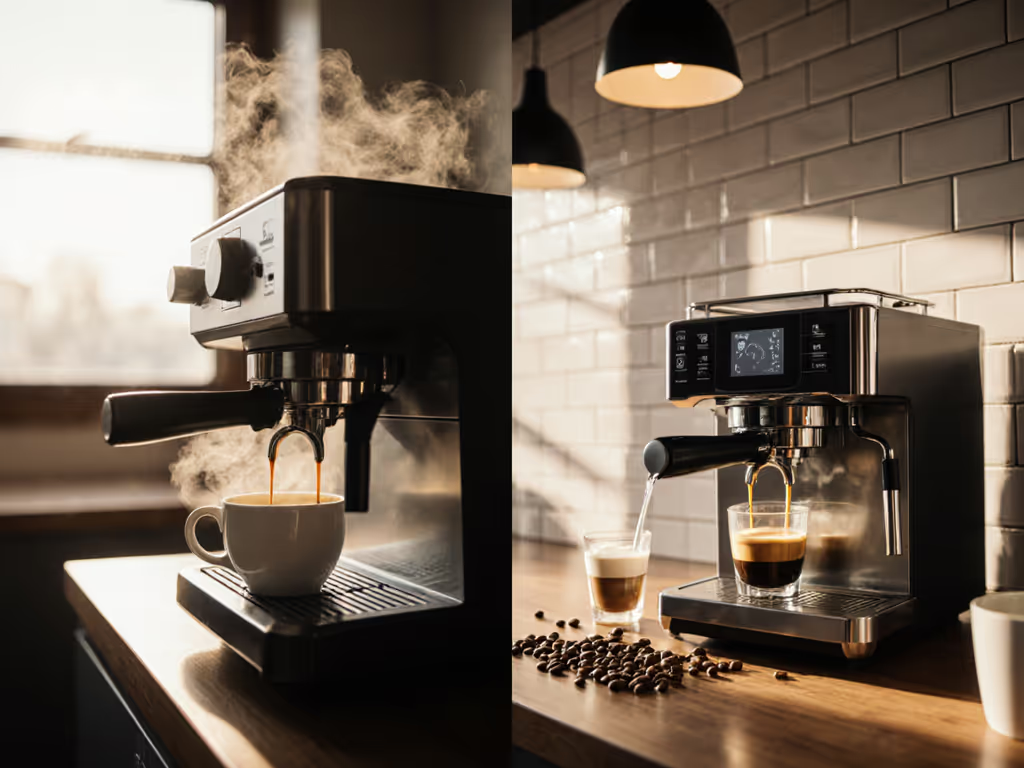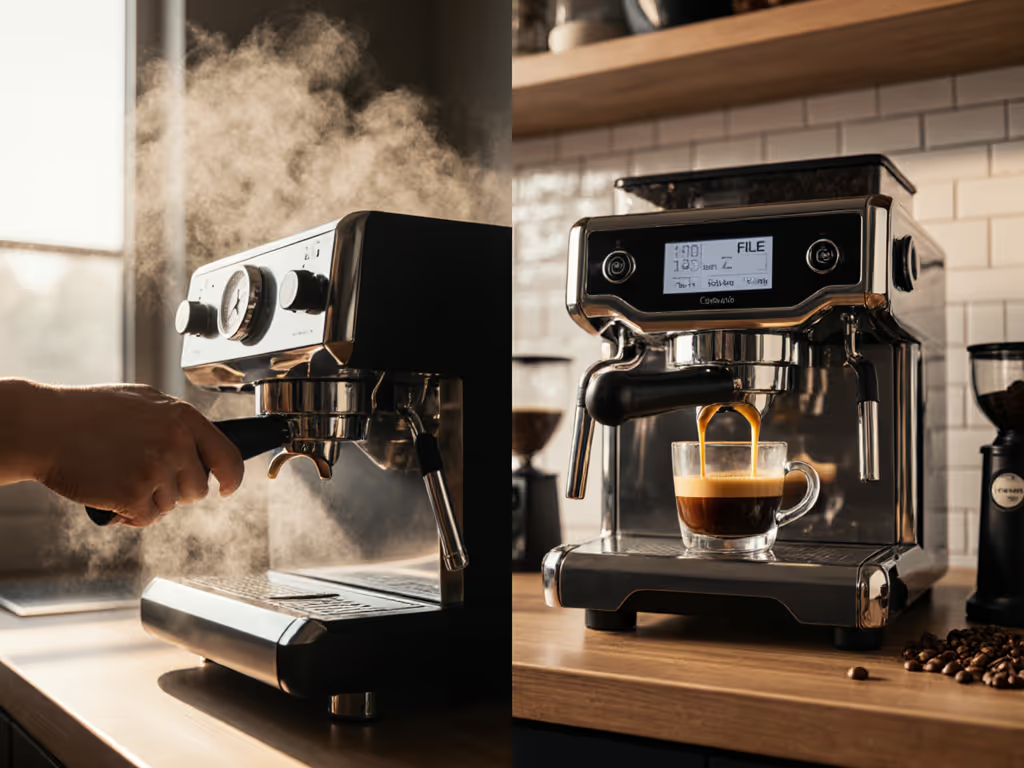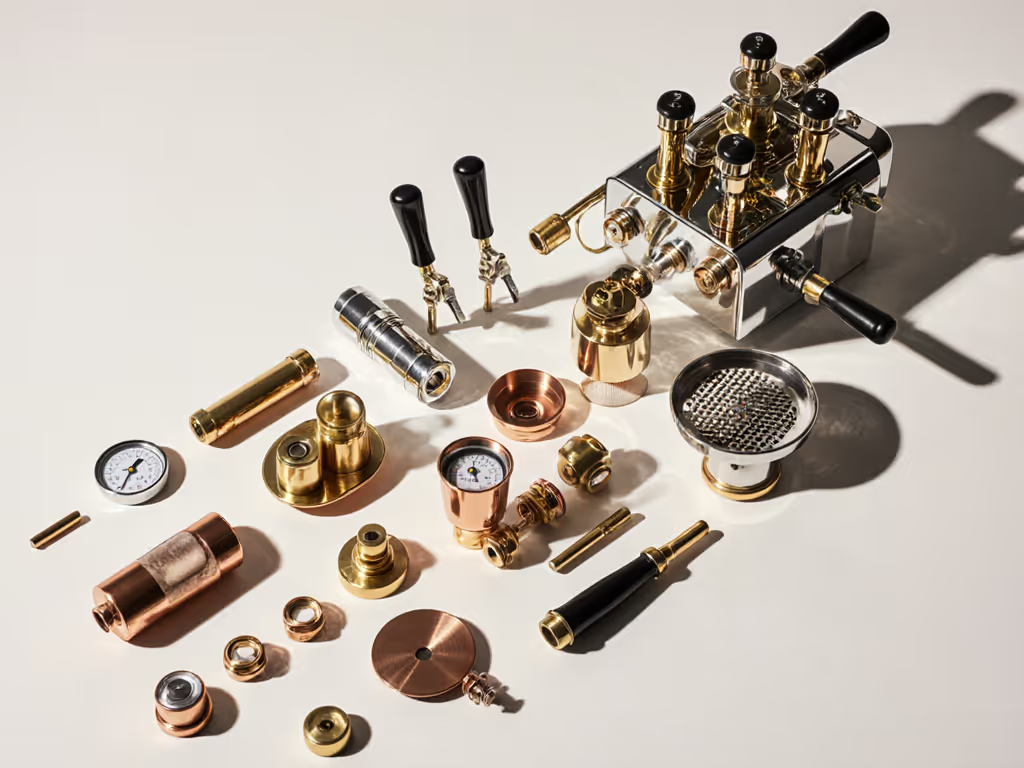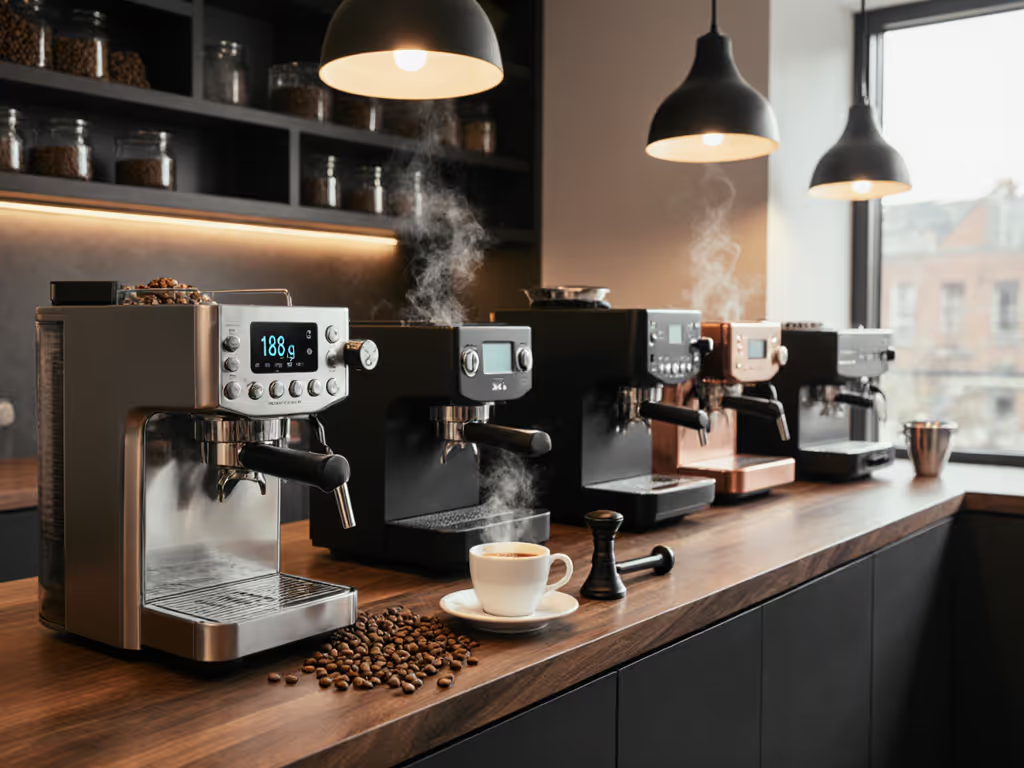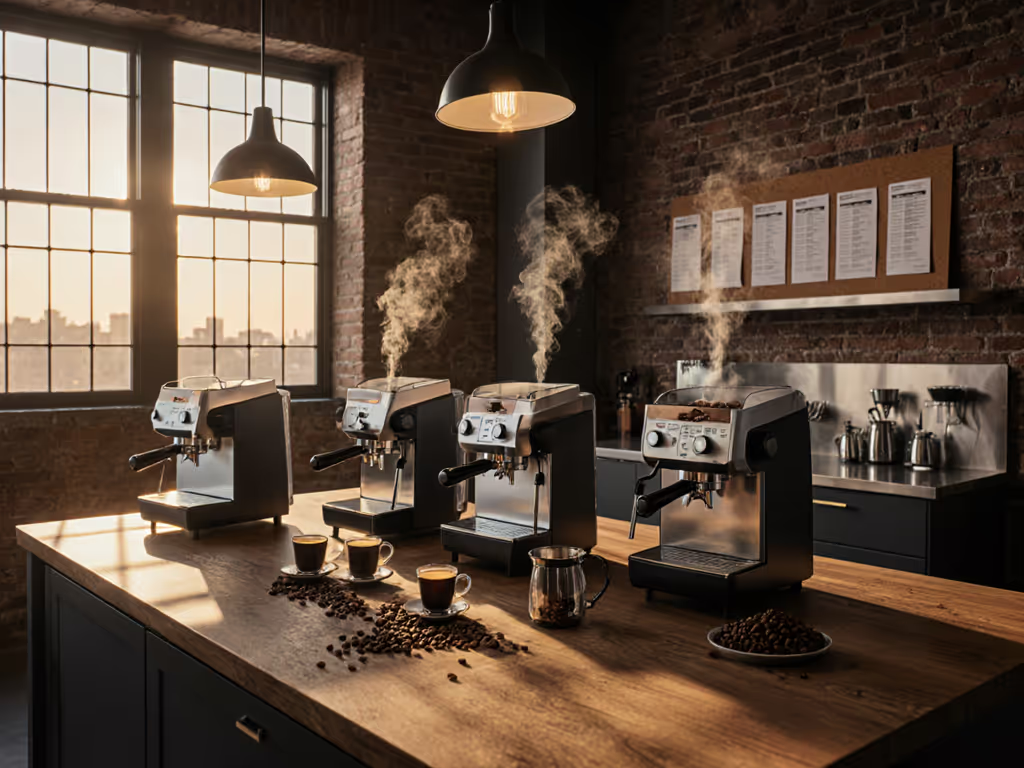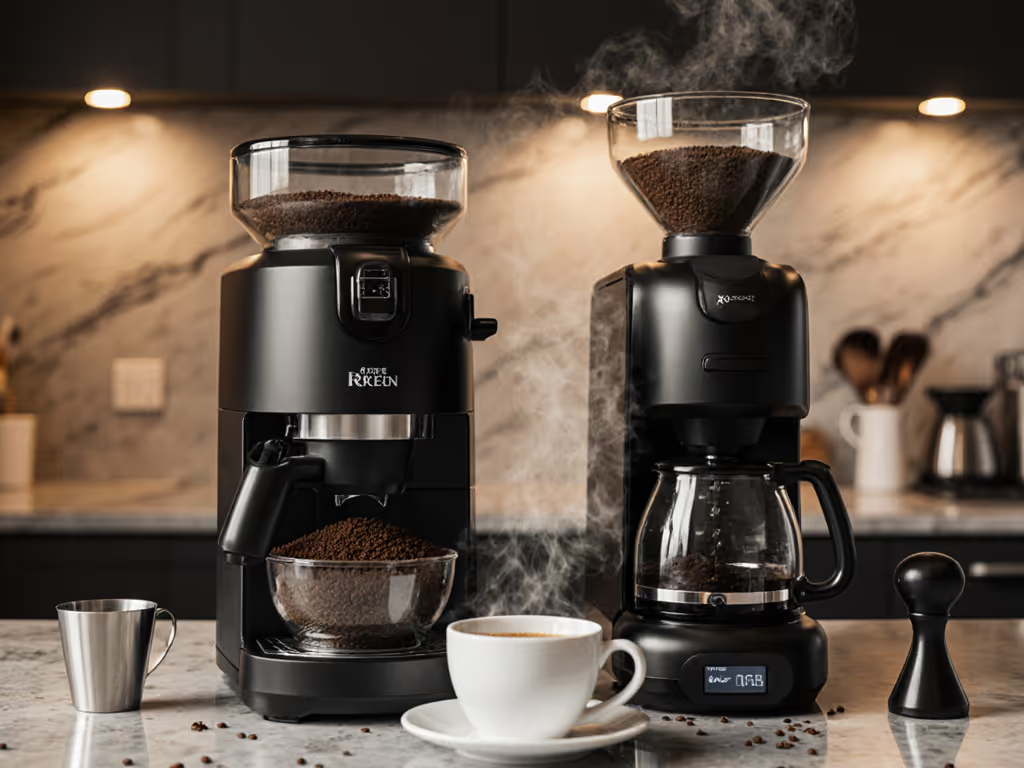Let's cut through the noise: you don't need the most expensive best manual espresso machines or a flashy traditional espresso machine to get cafe-quality espresso at home. You need the right machine for your mornings. As a barista trainer turned home coffee coach, I've seen too many beginners freeze at grinders, overwhelmed by variables, chasing elusive perfection. That's why I believe constraints create confidence. When you narrow your choices to what actually fits your life, you stop guessing and start brewing taste you can set a clock to. Whether you're drawn to the ritual of manual control or the streamlined flow of a semi-automatic, this guide cuts through marketing hype with real-home priorities: consistency, cleanup time, and calm mornings. Let's find your perfect match.
1. Why Manual Machines Still Shine (And Who They're Really For)
Manual lever espresso machines (like the Flair PRO 2 or Olympia Mina) offer the purest hands-on experience. No pumps, no electronics, just you, pressure, and coffee. But they're not for everyone. Let's be clear: manual machines solve specific pain points while introducing new constraints. If your ideal morning looks like this, they're worth considering:
✅ Ideal for:
- Tight spaces & silent operation: No pumps = no waking the household. Perfect for apartments or early risers. (The Flair PRO 2 packs into a carry case; the Mina's Swiss engineering fits on a bookshelf.)
- Precision seekers with patience: You want full control over every variable (pressure profile, flow rate, extraction time) without automation interfering. Gradual learning curves? Yes, please.
- Travel-friendly rituals: Taking your machine on vacation? Only manual levers survive this. The Flair PRO 2's included case transforms hotel rooms into micro-cafes.
⚠️ Pain Points They Don't Solve:
- Inconsistent shots on busy mornings: If you're dialing in fresh daily, manual isn't your friend. No built-in thermal stability means you must manage heat inertia. Miss the shot by 10 seconds? Temperature swings ruin your extraction.
- Multiple milk drinks: Steaming takes 2x longer than semi-autos. Two cappuccinos back-to-back? Good luck staying on schedule.
- Cleanup complexity: Manual machines often have fiddly parts (separate brew heads, piston seals) that trap coffee fines. Want dry pucks? You'll need meticulous workflow tweaks.
Luca's Reality Check: I've coached engineers who love the idea of manual control but abandon it after week two. Why? Life happens. If your mornings are chaotic (kids, commutes, back-to-back Zooms), manual demands ritual you might not have time for. Save it for weekends (when you can actually enjoy the process).
2. Semi-Automatics: The Sweet Spot for Reliability (When Done Right)
Semi automatic espresso coffee machine models like the Breville Barista Express Impress or Gaggia Classic Evo Pro balance automation and control. They handle only what's error-prone (dosing, tamping, timing), leaving creativity intact. For 80% of home baristas, this is the Goldilocks zone. Here's why:
✅ Where They Crush Pain Points:
- Consistent shots, even on rushed days: Features like Breville's "Smart Grind Adjustment" teach you what "right" feels like. If your shot runs too fast, the screen says: "Grind finer + purge old grounds." It's a calibration prompt built into the workflow, not a gimmick.
- Speed without sacrificing quality: Auto-dosing + 10kg tamp consistency = elimination of puck channels. The Classic Evo Pro's PID upgrade (critical for thermal stability) means two lattes in 8 minutes without temperature surfing.
- Cleanup in seconds: Magnetic tampers? Integrated razor tools? Dry pucks? Check. Semi-autos designed for home use (like the Impress) minimize post-shot friction. No wrestling with sticky portafilters at 6 AM.
⚠️ Hidden Trade-Offs Beginners Miss:
- Grinder compromises: Built-in grinders (e.g., Barista Express) often lack grind consistency. Pro tip: If upgrade budget allows, pair your semi-auto with a dedicated grinder. Your $200 Eureka Mignon will outperform any integrated unit. For a deeper breakdown of the trade-offs, read our built-in vs separate grinder guide.
- "Assisted" ≠ set-and-forget: Semi-autos still need meaningful calibration. That "auto" shot timing? It's just a starting point. True repeatability comes from your adjustments to dose/grind/time.
- Long-term maintenance: Steam wands clog faster here. But unlike super automatic machines (which hide failures behind error codes), semi-autos let you see the problem, and fix it with $5 replacement parts.
🔑 The "Bounded Choice" Framework for Semi-Autos
Don't drown in settings. Lock these three variables first, and everything else falls into place:
- Dose: Start with 18g (standard for dual-wall baskets). Never adjust this first, it's your anchor.
- Grind: Target 28-32 seconds for 36g output. Too fast? Finer. Too slow? Coarser. Use the machine's prompts as your sensory anchor: "Bitter? Too slow. Sour? Too fast."
- Time: If your machine has volumetric shot timers (e.g., Impress), set it to 28 seconds. This is your clock.
Master this triad, and you'll dial in shots in 3 attempts, not 30. That's how semi-autos deliver taste you can set a clock to.
3. The Decision Matrix: Match Your Machine to Your Morning
Still stuck? Ask these three questions (not which specs look impressive). Your answers reveal everything:
❓ Question 1: What's Your Non-Negotiable Morning Constraint?
- "I have 5 minutes max" → Prioritize speed + consistency. Semi-auto (e.g., Barista Express Impress). Auto-dosing shaves 90 seconds off your routine. Skip manual, it's too slow when rushed.
- "I want quiet, not noise" → Noise-free operation matters. Manual (e.g., Olympia Mina). Steam boilers scream; levers whisper. Semi-autos with vibration pumps? Dealbreaker if partners/kids sleep nearby.
- "I travel monthly" → Countertop footprint is irrelevant. Manual (e.g., Flair PRO 2). Semi-autos weigh 40+ lbs... good luck with TSA.
❓ Question 2: What's Your Realistic Skill Ceiling?
- "I'll tweak daily" → Manual gives unlimited variables. But be honest: will you really WDT and pressure-profile after back-to-back work meetings?
- "I want to learn gradually" → Semi-auto with manual mode (e.g., Classic Evo Pro). Start on auto-dose, then disable features as skills grow. Bounded choices prevent overwhelm.
- "I just want coffee" → Super automatic machines (e.g., Breville Oracle) might work... but warn clients: their flat taste profile often disappoints after 6 months. Not worth hidden costs like $120 milk pumps.
❓ Question 3: What's Your Actual Drink Profile?
- Solo espresso enthusiast → Manual (e.g., Cafelat Robot). Perfect for dialing in single-origin shots. Semi-autos overkill for one daily shot.
- Two milk drinks daily → Semi-automatic (e.g., Gaggia Classic Evo Pro). PID + large boiler = steam recovery for back-to-back drinks. Manual machines struggle here, thermal mass is too low.
- Group hosts (weekly) → Traditional espresso machine with dual boilers (e.g., Lelit Elizabeth). But if you rarely entertain? Skip the $2k+ investment.
${GENRIC_IMAGE(espresso-decision-matrix-visual)}
The Final Pour: Confidence Over Compromise
Choosing between manual and semi-auto isn't about "best." It's about best fit for your life. I've watched beginners grasp this instantly when we strip away jargon: "What actually happens between your alarm and your first sip?" That's where the magic lives. The best espresso coffee machine isn't the one with the most features, it's the one that disappears into your routine, leaving only perfect coffee in its wake.
Remember my kitchen timer and three-setting card? Constraints didn't stifle creativity, they freed it. By bounding your choices (dose, grind, time), you eliminate doubt and unlock repeatability. Traditional espresso machine purists might scoff, but in home kitchens? Consistency beats complexity every time.
So here's your actionable next step: For one week, time your current coffee routine. Track bottlenecks: warm-up lag, steam recovery, cleanup. Notice where friction lives. Then re-read this guide through that lens (not marketing promises). You'll feel the answer in your bones. When you do, you'll brew taste you can set a clock to. And that's a cup worth savoring.
